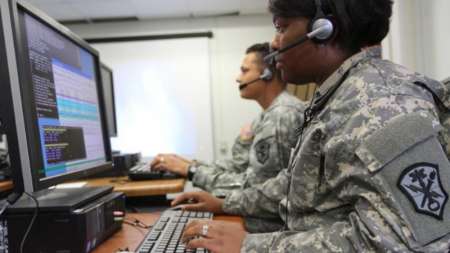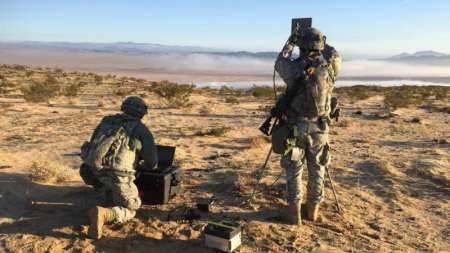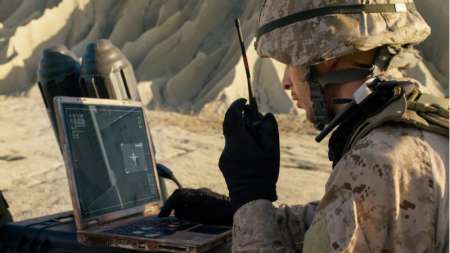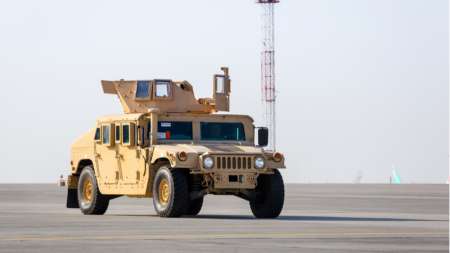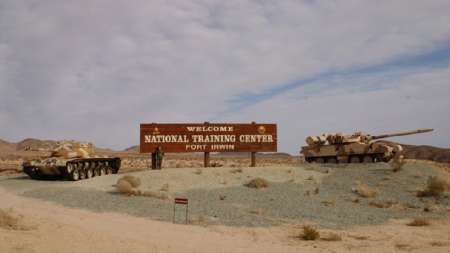The Army Futures Command (AFC) is ready to start working on modernizing the U.S. Army. As MeriTalk reported last month, the new AFC is headquartered in Austin. John Murray, who will lead the new command, was promoted to four-star general last Friday at a ceremony in Austin, following Senate confirmation of the promotion early last week. […]
Brian Sadler, senior scientist for intelligent systems at the U.S. Army Research Laboratory, today discussed how the expanse of artificial intelligence (AI) research activities across the Army is bringing to light even greater challenges. […]
The Army could soon be leveraging more autonomous vehicle capabilities and commercial communications solutions to bring it closer to a goal of persistent communications, persistent intelligence, surveillance, and reconnaissance (ISR), and faster decision speed. […]
The Army needs help from academia and the private sector to modernize its workflow, explained Maj. Gen. Garrett Yee, acting deputy CIO for the U.S. Army, during an Avaya webinar today. Yee specifically stressed an interest in industry helping to make the Army’s workflows interoperable and said that “workflows at the installation level must be scalable” to achieve true modernization. […]
Welcome to MeriTalk News Briefs, where we bring you all the day’s action that didn’t quite make the headlines. No need to shout about ‘em, but we do feel that they merit talk. […]
Federal IT leaders discussed the ways their organizations are tackling the proliferation of more and more endpoints on Federal networks at MeriTalk’s Cyber Security Brainstorm Thursday. In particular, ever-increasing mobile connectivity is creating the potential for further headaches, but the officials advised that next-gen technologies and proper network and data governance provide avenues to expand the ways employees work without compromising security at the network edge. […]
As it looks to get new technologies developed and into the field as quickly as possible, the Department of Defense has been making greater use of Other Transaction Authority (OTA), a quick-strike contracting mechanism that has gone in and out of fashion since the 1950s, but is now seeing a resurgence. […]
Welcome to MeriTalk News Briefs, where we bring you all the day’s action that didn’t quite make the headlines. No need to shout about ‘em, but we do feel that they merit talk. […]
Welcome to MeriTalk News Briefs, where we bring you all the day’s action that didn’t quite make the headlines. No need to shout about ‘em, but we do feel that they merit talk. […]
As far as the Department of Defense is concerned, artificial intelligence is a team game, particularly where robots are concerned. […]
Alexander Kott, chief scientist at the U.S. Army Research Laboratory, said Wednesday at the Defense Systems Summit that creating artificial intelligence (AI) and machine learning (ML) solutions for complex battlefield environments requires different prioritization than commercial solutions, and offered four tips for defense organizations looking to implement. […]
The latest edition of the Army’s annual Cyber X-Games exercise is designed to let Reserve and other cyber warriors team up to train in dealing with real-world situations. It is focused on protecting U.S. infrastructure, an area somewhat outside the norm for the exercises, but one that reflects an emerging potential battleground on the cyber landscape. […]
Welcome to MeriTalk News Briefs, where we bring you all the day’s action that didn’t quite make the headlines. No need to shout about ‘em, but we do feel that they merit talk. […]
The possibilities of quantum computing have been floating on the horizon for a while now, at least since renowned physicist Richard Feynman dreamed up the idea in 1982. But like the horizon itself (at least in a world that isn’t flat), it always seems to recede despite all efforts to close in on it. Until now. […]
Artificial Intelligence systems are known for getting results with compute-intensive analytics involving huge data sets and a lot of processing power. But it turns out they also can help users do more with less. […]
Army Lieutenant General Paul Nakasone is taking over this afternoon as chief of U.S. Cyber Command and director of the National Security Agency. At the same time, U.S. Cyber Command is being elevated to the level of a full unified military command, the Defense Department said today. […]
The Pentagon’s vision of future warfare involves teams of small autonomous and semi-autonomous unmanned vehicles–in the air, on the ground, and in the water–operating in coordinated swarms to support troops on the battlefield. […]
In another example of how far the cyber domain is pervading every aspect of warfare, military units are beginning to add cyber protection testing to vehicles before they hit the road. […]
The Army recently added 18 more vendors to its $250 million Army Cloud Computing Enterprise Transformation (ACCENT) contract, which kicked off last year with 50 vendors certified as meeting the Army’s requirements for cloud services. […]
The U.S. military has long laid claim to having the best-equipped, best-trained fighting force in the world, and to spending more on defense than the next eight top-spending nations combined. But when the battleground is cyberspace, does that claim hold up? […]
The Department of Defense (DoD) and contractor Cerner are coming off an eight week break in the initial deployment of what’s planned to be a worldwide health care records system. The team stopped work to address glitches in system performance and contend with negative user feedback. But officials in charge of the deployment of the MHS Genesis system said the pause was planned as part of the rollout, initial complaints were expected, and DoD still expects to complete the $4.3 billion system by 2022. […]
Like King Louie in the Jungle Book–Artificial Intelligence has to learn like people. Machine learning’s surely a brilliant student, but it’s still a slow learner. Once trained to recognize patterns, analyze huge amount of data, or interpret speech, they can do the job at lightning speed, often better than humans can. But the training part of that equation can be a labor and programming-intensive task, because machines still learn like machines–one thing at a time, often only after repeated instruction. […]
Pentagon leaders say they’re serious about getting ahead in the artificial intelligence (AI) game, which increasingly could include the “games” involved in the modeling and simulation programs used for training. […]
Sometime in May, the Army will take two armed, autonomous Humvees out onto a gunnery range to test and certify them as combat vehicles, which will make them the first robotic ground vehicles to be OK’d for combat. […]
The idea of a scorecard seems like a quaint notion, conjuring black and white photos of somebody’s grandad in a fedora, licking the pencil tip before recording the latest play at the old ballgame in his program. […]
The Army’s work on the Internet of Battlefield Things (IoBT) is more than just a way to carve out a catchy name for the proliferation of smartphones, tablets, wearable devices, cameras and embedded devices that take the field with military forces. It also underscores the most important element of having those connected devices–the data collection and automated analytics capabilities required to make good use of the information they provide. […]
A lot of the Army’s most high-profile modernization projects concern complex, expensive weapons systems that emerge from research and development, budgeting, and procurement process inside the halls of the Pentagon and other facilities and outside of the experience of most people. But some key elements of the Army’s efforts to keep pace with the demands of a changing world are so familiar to people at home, at work, or in a coffee shop that they take them for granted. An example of this is good, reliable Wi-Fi. […]
The military’s use of unmanned, and even semi-autonomous aircraft has been extensive, but no one’s ever pretended that it would be as easy as point-and-click. That day could be getting closer however, as the Marine Corps recently demonstrated how autonomous helicopter flights could clear a few final hurdles and move towards more widespread military use. […]
After years on the backburner, electronic warfare (EW) is moving up the ranks as an integral part of the Pentagon’s military focus. The Army last month received approval to move ground-based EW efforts into the Terrestrial Layer Intelligence System, joining cyber, signals, and other intelligence as part of the Multi-Function Electronic Warfare (MFEW) structure. The service wants to include airborne EW later this year. […]
With the Internet for transportation, a lie can get all the way around the world before truth can blink itself awake. And that’s a challenge for those who seek to stem the proliferation of false information, be it accidentally misattributed quotes, political propaganda, or malicious “fake news.” Artificial intelligence can help combat the problem, by using machine learning algorithms to detect the patterns used in phony stories and ads designed to stir up fear or outrage, or, in the case of Russian disinformation, unsettle people’s faith in American institutions. […]

